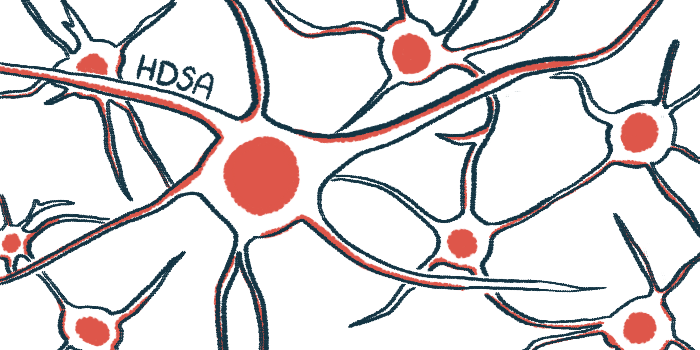HDSA 2025: Dance classes may improve balance in Huntington’s
In small pilot study, patients seen to maintain better function

Participating in dance classes may help people with Huntington’s disease improve their balance and maintain their functional capacity, according to the results of a small U.S. pilot study in which patient mobility was assessed before and after an intervention program.
The researchers shared the results in a talk titled “Dance For Huntington’s Disease (DfHD)” at the annual convention of the Huntington’s Disease Society of America (HDSA), held last week in Indiana.
“We think that dance is uniquely suited as a unique interventional model for people with Huntington’s disease,” said Ashwini Rao, an occupational therapist at Columbia University’s HDSA Center of Excellence, who led the study there.
Rao, alongside Paul Dennis, a professor of dance at Hunter College in New York City, discussed the potential benefits of dance for Huntington’s, and detailed results from their HDSA-supported pilot study. The two researchers emphasized that dance incorporates many different facets that could potentially be beneficial to people with Huntington’s.
“Dance is very, very unique,” said Rao, also a professor of rehab medicine at Columbia. “It is a low to moderate intensity activity, so it’s easy on the joints,” Rao said, noting that dance “works on coordination. It specifically works on movement timing … [and] speed. It works on balance.”
It also “improves memory, attention … [and] mood,” Rao added.
For his part, Dennis noted that dancing can help people feel more grounded and at home in their bodies, and be more conscious of how they are moving through the world.
At the presentation’s start, Dennis led the audience through a series of exercises: mindfully noticing things in the room, moving around, and simply being aware of their bodies as they stood in place.
“Feel all the little muscles that are working to give you equilibrium. … Pay attention to that,” Dennis said. “That’s a lot of work that’s going on just to stand, and sometimes we walk and we’re not even aware of how much work it takes.”
Balance is often viewed as a static thing, Dennis noted, but being balanced is not merely the same as being still, he said. “Balance is more like equilibrium,” he noted.
7 Huntington’s patients completed dance program
The researchers conducted the pilot study to assess the impact of dance in people with Huntington’s. The first group of participants were 10 adults with mild to moderate disease who were able to walk independently for about 20 meters, or nearly 22 yards.
Seven participants — four men and three women, ranging in age from 41 to 70 — completed the study. Rao noted that three had greater motor problems than the other four, but all were mostly independent in their daily activities. No participant had a higher risk of falls.
The study lasted 36 weeks, or about nine months, with three phases. First, the participants underwent a battery of tests for balance, mobility, general motor function, cognitive skills, and quality of life. This was done both at the beginning of the study and after 12 weeks, or three months, to ensure motor function was stable in the absence of an intervention.
For the next 12 weeks, patients participated in a dance class at Hunter College Dance Studios, held twice per week. Another round of assessments was done right after the dance classes ended. The study then concluded with another assessment 12 weeks later to see if the classes had a long-term effect.
Walking patterns seen to improve with intervention
The results showed that, before the dance program, participants remained stable regarding their motor performance. There were no safety issues with the program, which “was well tolerated,” Rao said.
After the dance program, measures of balance and walking patterns tended to improve. These improvements failed to reach statistical significance, meaning it’s mathematically plausible that the change could just be random chance. But Rao noted that the small number of participants makes it unlikely that the study could have found statistically meaningful results.
[Patient feedback was] extremely positive. … The only complaint we had from the participants was that the program [of dance classes] was ending.
Measures of functional capacity were stable over the course of the study, “which is good that people maintain their function since they were doing quite well at the beginning,” Rao said.
In addition, feedback from participants was “extremely positive,” Rao said. “The only complaint we had from the participants was that the program was ending, and they didn’t like that.”
Overall, the results of this pilot study were “very, very positive and hopeful for us, even with a small sample of seven people,” Rao said, noting that the researchers hope to continue the study with a second group of patients.
Note: The Huntington’s Disease News team is providing virtual coverage of the Huntington’s Disease Society of America annual convention June 26-28. Go here to see the latest stories from the conference.







